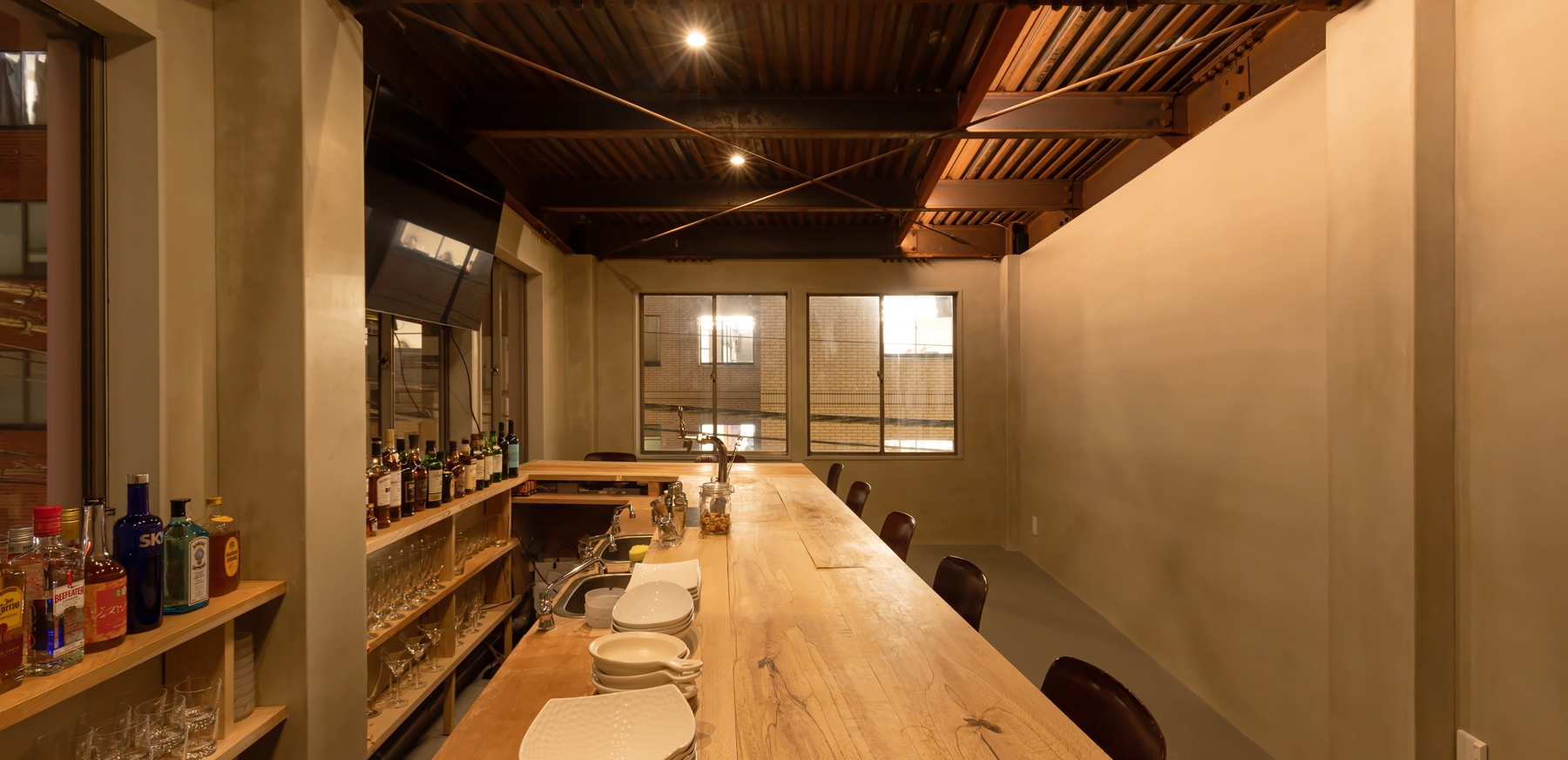
We planed the bar in the small building near Gotanda station. The client, their business is installing the network system for offices, needed an interior suited for face to face communication with liquor instead of the online’s one through the display.
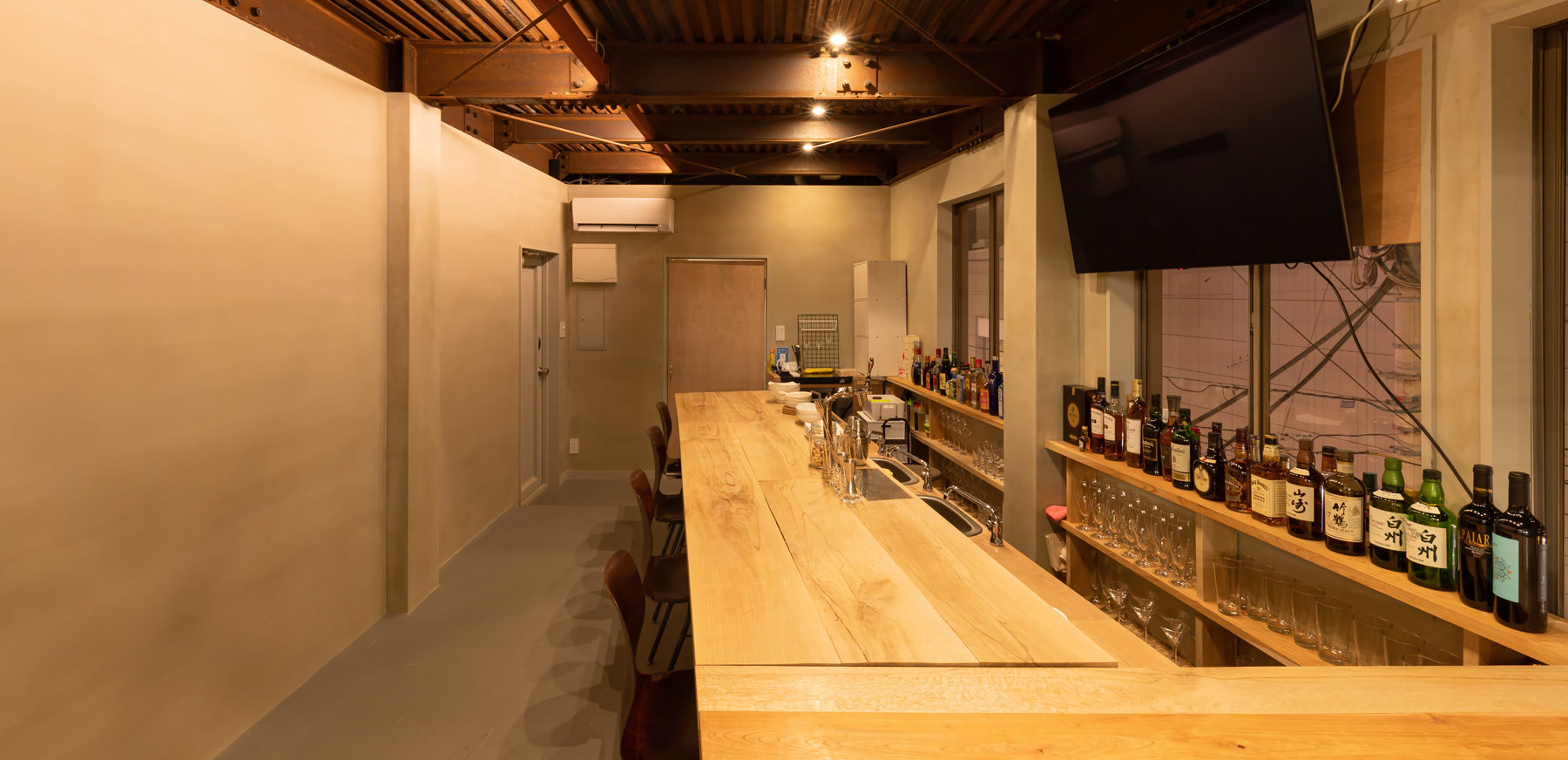
We had been planning the counter made by wild woods from the forest behind the house originally the owner of this project from. Soon after the project started, the huge typhoon came and destroyed Chiba area. Then countless of fallen woods prevented roads and cut the lines of electricity.
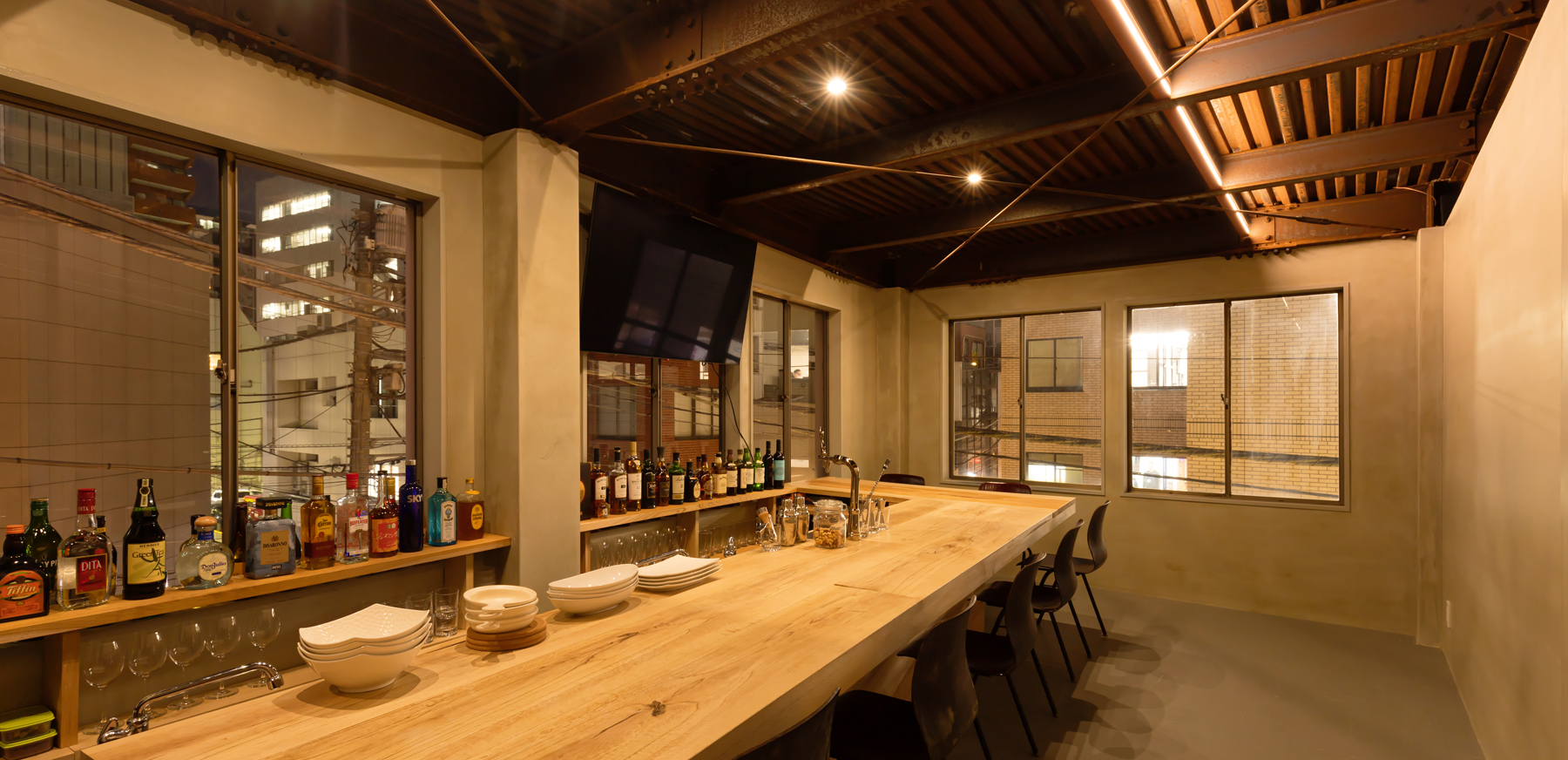
We suggested using those woods for the counter of the bar, paying the money to the engineer of forestry for cutting them and the lumberer for making the lumbers.
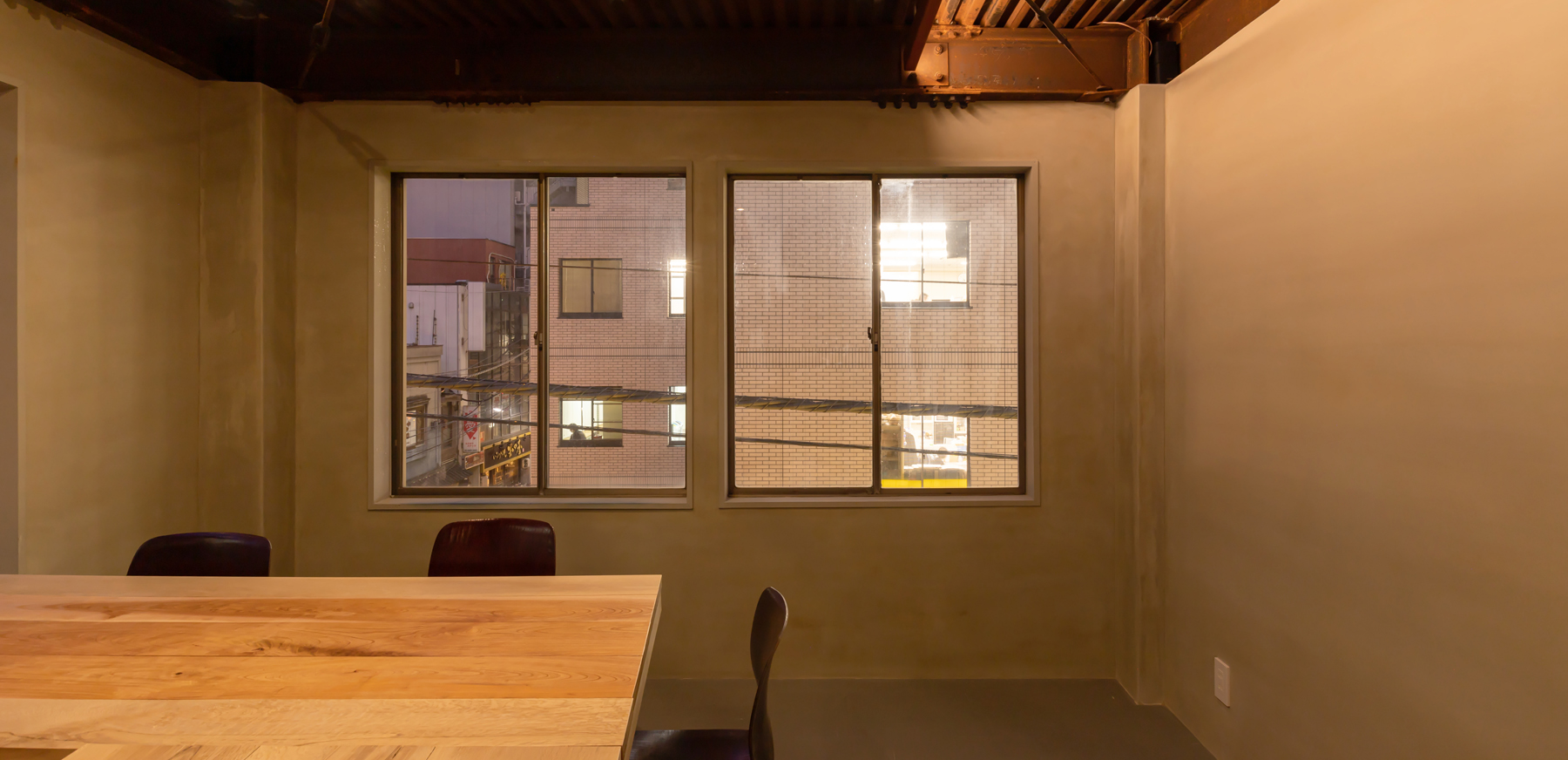
On the other hand, we chose “Ootsu migaki” one of the traditional Japanese plastering technique by soil. The artisan was Tatsuya Tokura. He recommended that finishing instead of mortar finishing the client wanted.
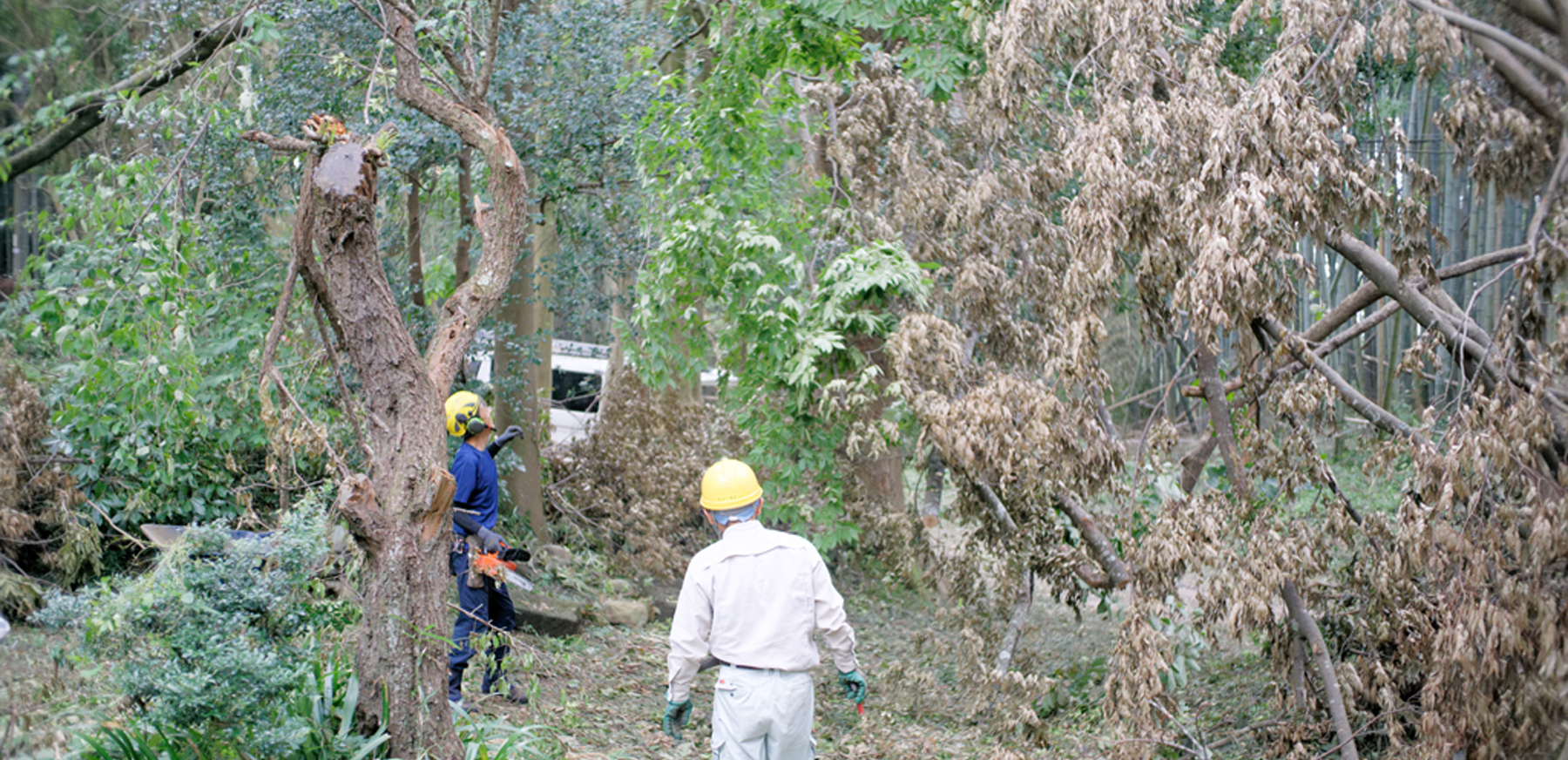
Our daily life is filled with full of fake interiors. At the same time, There is a lot of important things like lumbers from neighbor forests or techniques of plasterer, they are already hard to access. We believe If you don’t care woods warping or frequent maintenance for natural materials, we can create without fake materials. Finally, it was realized that the bar consists of the wild warping woods counter and the traditional plasterer wall with full of textures in Gotanda Tokyo.
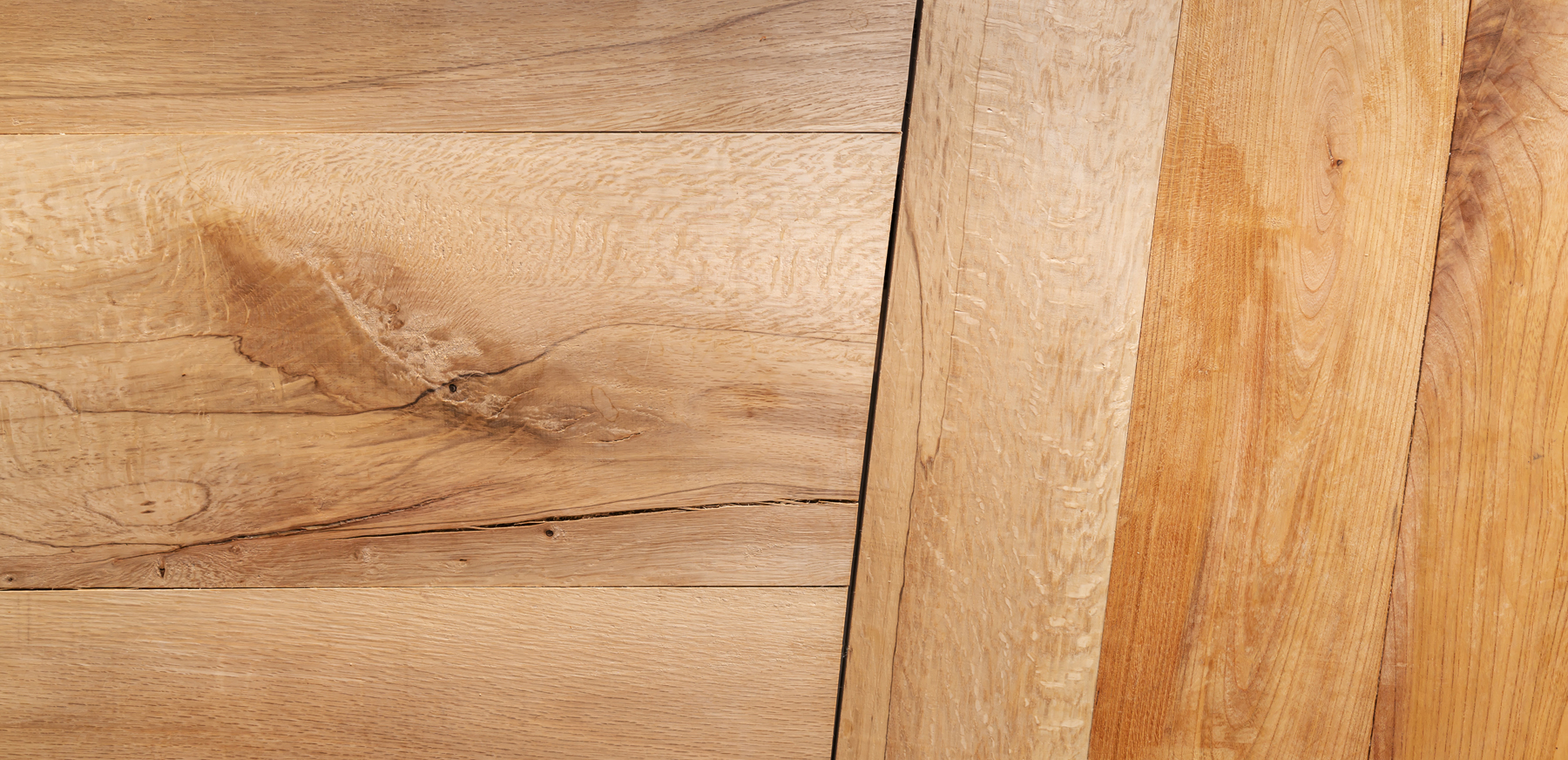
In computing and related technologies such as networking, failover is switching to a redundant or standby computer server, system, hardware component or network upon the failure or abnormal termination of the previously active application,[1] server, system, hardware component, or network. Failover and switchover are essentially the same operation, except that failover is automatic and usually operates without warning, while switchover requires human intervention. ^Wikipedia "Failover"



Plasterer: Tokura Sakan
Photo: Ryosuke Sato